Related Research Articles

Monticello was the primary plantation of Thomas Jefferson, a Founding Father, author of the Declaration of Independence, and the third president of the United States, who began designing Monticello after inheriting land from his father at age 14. Located just outside Charlottesville, Virginia, in the Piedmont region, the plantation was originally 5,000 acres (20 km2), with Jefferson using the forced labor of Black slaves for extensive cultivation of tobacco and mixed crops, later shifting from tobacco cultivation to wheat in response to changing markets. Due to its architectural and historic significance, the property has been designated a National Historic Landmark. In 1987, Monticello and the nearby University of Virginia, also designed by Jefferson, were together designated a UNESCO World Heritage Site. The current nickel, a United States coin, features a depiction of Monticello on its reverse side.
The International Council on Monuments and Sites is a professional association that works for the conservation and protection of cultural heritage places around the world. Now headquartered in Charenton-le-Pont, France, ICOMOS was founded in 1965 in Warsaw as a result of the Venice Charter of 1964 and offers advice to UNESCO on World Heritage Sites.

Cultural tourism is a type of tourism in which the visitor's essential motivation is to learn, discover, experience and consume the cultural attractions and products offered by a tourist destination. These attractions and products relate to the intellectual, spiritual, and emotional features of a society that encompasses arts and architecture, historical and cultural heritage, culinary heritage, literature, music, creative industries as well as the living cultures with their lifestyles, value systems, beliefs and traditions.

National Historic Sites of Canada are places that have been designated by the federal Minister of the Environment on the advice of the Historic Sites and Monuments Board of Canada (HSMBC), as being of national historic significance. Parks Canada, a federal agency, manages the National Historic Sites program. As of November 2023, there were 1,005 National Historic Sites, 171 of which are administered by Parks Canada; the remainder are administered or owned by other levels of government or private entities. The sites are located across all ten provinces and three territories, with two sites located in France.
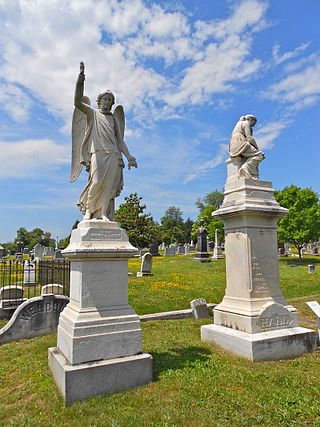
The Congressional Cemetery, officially Washington Parish Burial Ground, is a historic and active cemetery located at 1801 E Street, S.E., in Washington, D.C., on the west bank of the Anacostia River. It is the only American "cemetery of national memory" founded before the Civil War. Over 65,000 individuals are buried or memorialized at the cemetery, including many who helped form the nation and Washington, D.C. in the early 19th century.

Historic preservation (US), built heritage preservation or built heritage conservation (UK) is an endeavor that seeks to preserve, conserve and protect buildings, objects, landscapes or other artifacts of historical significance. It is a philosophical concept that became popular in the twentieth century, which maintains that cities as products of centuries' development should be obligated to protect their patrimonial legacy. The term refers specifically to the preservation of the built environment, and not to preservation of, for example, primeval forests or wilderness.

The National Wildlife Federation (NWF) is the United States' largest private, nonprofit conservation education and advocacy organization, with over six million members and supporters, and 51 state and territorial affiliated organizations (including Puerto Rico and the Virgin Islands).
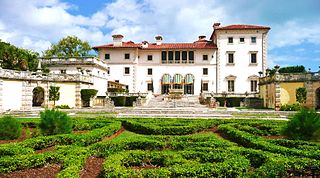
The Vizcaya Museum and Gardens, previously known as Villa Vizcaya, is the former villa and estate of businessman James Deering, of the Deering McCormick-International Harvester fortune, on Biscayne Bay in the present-day Coconut Grove neighborhood of Miami, Florida. The early 20th-century Vizcaya estate also includes extensive Italian Renaissance gardens, native woodland landscape, and a historic village outbuildings compound.

Heritage Documentation Programs (HDP) is a division of the U.S. National Park Service (NPS) responsible for administering the Historic American Buildings Survey (HABS), Historic American Engineering Record (HAER), and Historic American Landscapes Survey (HALS). These programs were established to document historic places in the United States. Records consist of measured drawings, archival photographs, and written reports, and are archived in the Prints and Photographs Division of the Library of Congress.
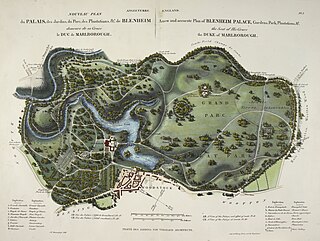
Historic garden conservation is a specialised type of historic preservation and conservation or restoration concerned with historical and landmark gardens and designed landscapes.
The Historic Preservation Fund (HPF) provides financial support for historic preservation projects throughout the United States. The fund is administered by the National Park Service (NPS), pursuant to the National Historic Preservation Act of 1966 (NHPA). The fund provides state historic preservation agencies with matching funds to implement the act.
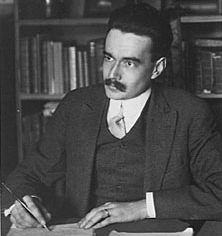
Sidney Fiske Kimball was an American architect, architectural historian and museum director. A pioneer in the field of architectural preservation in the United States, he played a leading part in the restoration of Monticello and Stratford Hall Plantation in Virginia.

A Cultural Property is administered by the Japanese government's Agency for Cultural Affairs, and includes tangible properties ; intangible properties ; folk properties both tangible and intangible; monuments historic, scenic and natural; cultural landscapes; and groups of traditional buildings. Buried properties and conservation techniques are also protected. Together these cultural properties are to be preserved and utilized as the heritage of the Japanese people.
Alexander Reford is a historian by training, with master's degrees in history from the University of Toronto and Oxford University. Born in Ottawa, Ontario, in 1962, he was raised and educated in the Outaouais region of Québec. He held the position of Dean of College at St. Michael's College at the University of Toronto from 1987 to 1995. He left to assume the directorship of Les Jardins de Métis, a cultural destination and tourist attraction located on the banks of the St. Lawrence in Grand-Métis, Quebec. The great-grandson of Elsie Reford, creator of the Gardens, he was instrumental in creating the not for profit organization that purchased them from the Quebec government in 1995. Under his stewardship, a complete restoration of the gardens and the historic buildings on the property has been undertaken.

Grand Canyon Conservancy, formerly known as Grand Canyon Association, is the National Park Service's official non-profit partner of Grand Canyon National Park, raising private funds, operating retail shops within the park, and providing premier guided educational programs about the natural and cultural history of the region. Supporters fund projects including trails and historic building preservation, educational programs for the public, and the protection of wildlife and their natural habitat.
The Starr Center for the Study of the American Experience is an institute at Washington College, in Chestertown, Maryland, that promotes the research and study of American history and culture. Founded in 2000, the Starr Center at Washington College is one of many educational initiatives funded by the Starr Foundation, a private foundation with assets of over $1.25 billion. The inaugural director of the Starr Center, Edward L. Widmer, served under Bill Clinton as special assistant to the president for national security affairs; among other accomplishments, he wrote foreign policy speeches and advised the president on topics related to history and scholarship as senior advisor to the president for special projects. Since 2006, Adam Goodheart, a historian, journalist and author of 1861: The Civil War Awakening, has served as director of the Center. In addition to its academic components, the C.V. Starr Center works closely with external groups to sponsor events of public interest, such as the Poplar Grove Project, a recovery and recordation project in collaboration with the Maryland State Archives, and hosts readings and lectures often focused on topics of local interest, such as Chesapeake Bay history.

The Gardens of Monticello were gardens first designed by Thomas Jefferson for his plantation Monticello near Charlottesville, Virginia. Jefferson's detailed historical accounts of his 5,000 acres provide much information about the ever-changing contents of the gardens. The areas included a flower garden, a fruit orchard, and a vegetable garden. Jefferson, a connoisseur of trees, flowers, and gardening techniques, was highly interested in experimental planting and directed the design of the gardens, which contained many exotic seeds and plants from his travels abroad.
The Journey Through Hallowed Ground National Heritage Area is a federally designated National Heritage Area in portions of Pennsylvania, West Virginia, Maryland and Virginia.
The Thomas Jefferson Foundation, originally known as the Thomas Jefferson Memorial Foundation, is a private, nonprofit 501(c)(3) corporation founded in 1923 to purchase and maintain Monticello, the primary plantation of Thomas Jefferson, the third president of the United States. The Foundation's initial focus was on architectural preservation, with the goal of restoring Monticello as close to its original appearance as possible. It has since grown to include other historic and cultural pursuits and programs such as its Annual Independence Day Celebration and Naturalization Ceremony. It also publishes and provides a center for scholarship on Jefferson and his era.
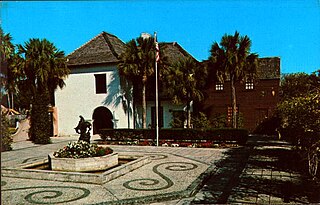
The Hispanic Plaza is a garden in St. Augustine, Florida owned and maintained by the St. Augustine Foundation, Inc. It is closed to the public and is only opened for special city events.
References
- 1 2 "Historic Garden Week". Garden Club of Virginia.
- ↑ "Restoration Properties". Garden Club of Virginia.
- ↑ "Restoration Fellowship". Garden Club of Virginia.
- ↑ "STATEWIDE TRADITION HELPS VIRGINIA THRIVE" (PDF). Economic-Impact-Study-2021.pdf.
- ↑ "2022-By-The-Numbers.pdf" (PDF). Garden Club of Virginia.